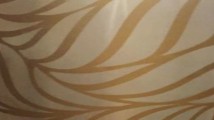Abstract
In this paper, a purpose-built apparatus was used to analyze the moisture liberation of textile fabrics. Fabrics were wetted and placed in an air-conditioned room to test the variation of weight and surface temperature during the process of moisture liberation. Effects of textile materials and fabric structures on the velocities of moisture liberation of fabrics were analyzed; the temperature variation and its relationship with moisture regains of fabrics in the moisture liberation were also studied. Moisture liberation velocities of polyester and silk fabrics are much higher than that of wool and cotton fabrics. For the same textile materials, knitted fabrics absorbed more water and thus took longer time to liberate the water. The surface temperature of fabrics showed three stages during moisture liberation. With the decrease of moisture regain, fabric temperature decreased gradually and jumped quickly to ambient temperature. In this way we could evaluate the moisture desorption of fabrics and develop quick-drying fabrics with imporved moisture and thermal properties.
Similar content being viewed by others
References
M. M. Adler and W. K. Walsh, Text. Res. J., 54, 334 (1984).
M. Awano, M. Shirai, and K. Ishikawa, Sen-i Gakkaishi, 43, 75 (1987).
R. M. Crow and R. J. Osczevski, Text. Res. J., 68, 280 (1998).
Y. Li, Textile Progress, 31, 64 (2001).
Y. Li, A. M. Planet, and B. V. Holcombe, Text. Res. J., 65, 316 (1995).
M. A. Rousselle, D. P. Thibodeaux, and A. D. French, Text. Res. J., 75, 177 (2005).
AATCC Test Method 79, Absorbency of Bleached Textiles, AATCC, 2000.
BS 3424: Methods for Determination of Resistance to Wicking and Lateral Leakage, Part 18: 1986 (1996) Methods 21A and 21B, BSI, 1996.
Y. Li and Q. Zhu, Text. Res. J., 73, 515 (2003).
J. Hu, Y. Li, K. Yeung, A. S. W. Wong, and W. Xu, Text. Res. J., 75, 57 (2005).
Y. Li, W. Xu, and K. W. W. Yeung, U.S. Patent, 6,499,338 B2 (2000).
R. Li and J. Song, “Measuring Techniques for Textile Materials”, p.219, Publishing House of DongHua University, Shanghai, 2005.
D. W. Lyons and C. T. Vollers, Text. Res. J., 41, 661 (1971).
N. Agarwal, D. A. Hoagland, and R. J. Farris, J. Appl. Polym. Sci., 63, 401 (1998).
T. K. Maji, D. Basu, C. Datta, and A. Banerjee, J. Appl. Polym. Sci., 84, 967 (2002).
Y. Li and B. V. Holcombe, Text. Res. J., 62, 211 (1992).
N.V. Bhat and S. M. Ahirrao, Text. Res. J., 55, 65 (1985).
Author information
Authors and Affiliations
Corresponding author
Rights and permissions
About this article
Cite this article
Li, W., Xu, W., Cui, W. et al. A novel method to analyze the moisture liberation of textile fabrics. Fibers Polym 9, 312–316 (2008). https://doi.org/10.1007/s12221-008-0050-0
Received:
Revised:
Accepted:
Published:
Issue Date:
DOI: https://doi.org/10.1007/s12221-008-0050-0




